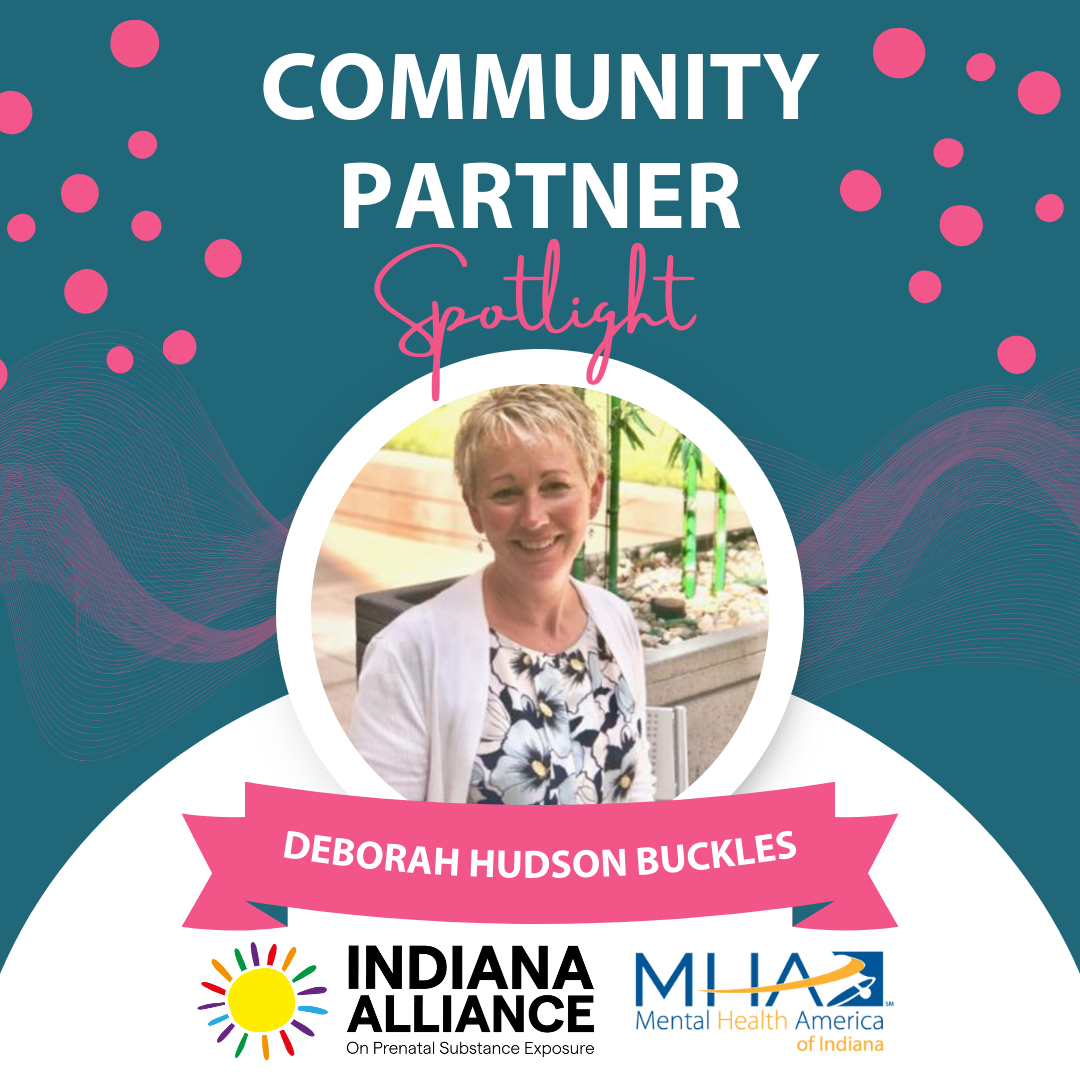On a morning in April, Kristen Cebada woke up and told herself: You have two choices. You can get heroin today or you can save your life and that of your unborn baby.
Past experience had taught her that the longer she waited to stop using drugs, the harder it would be to quit. Mustering all the resolve she had, Cebada dragged herself to the emergency room.
“I walked in the door and I said, I’m pregnant, I relapsed on heroin, and I don’t want to kill my baby,” she said, as she choked back tears. “It was that serious for me…. I knew if they didn’t help me then, there was a real chance that I wouldn’t live and neither would he.”But finding a doctor who can care for these women’s obstetric needs while treating their substance use disorder can prove challenging. Many addiction doctors and facilities shy away from them and few obstetricians have training to help them
“I consider them to be the least, last, and lost of this epidemic,” said Dr. Tara Benjamin, a maternal fetal medicine specialist with Indiana University Health.
Benjamin is one of a handful of obstetricians in the state who treats addicted pregnant women with buprenorphine, a semi-synthetic opioid sold under the brand name Subutex and used to treat addiction. Only 37 doctors in the state can have a total of 100 patientsat any one time on the drug and Benjamin believes she is the only obstetrician among them.
As the number of women who use opioids has soared in the past decade, so has the number of these women who become pregnant, prompting more doctors to seek waivers to provide buprenorphine to their patients. Community Hospital East has two doctors who have received waivers to treat 30 patients each. In the past two years, the percentage of babies diagnosed with neonatal abstinence syndrome, or intrauterine drug exposure, in that hospital has nearly doubled.
In 2015, 20 percent of babies fell in that category. The following year that rose to 23 percent and the next year, 39 percent. Hospital staff note, however, some of the increase may stem from women coming for care because they know the obstetricians there have expertise in caring for women with substance use disorder.
Sometimes, however, a woman will come to the emergency room for an unrelated problem, such as treatment for injuries sustained in a car accident. After positive heroin and pregnancy tests, the emergency room doctor will refer her to Dr. Michelle Murphy, one of the two obstetricians with a specialty in addiction. She may leave and not return for treatment.
“That’s kind of heartbreaking for my staff and myself. We really want to help you, we don’t want you to lose your baby,” Murphy said.
Other times, women such as Cebada take the difficult path toward recovery.
‘What I was praying for’
Since her teen years in Arcadia in northern Hamilton County, Cebada, now 33, has struggled with addiction.
When Cebada was eight, her mother died in a car accident and she moved in with her paternal grandparents, as her father was in jail.
At 13, she started experimenting with marijuana and alcohol. Three years later, in 2000, her father was murdered.
While some of her classmates used drugs to party, Cebada turned to drugs to deaden her emotions.
“I became the kind of drug addict who didn’t get high because it was fun and I wanted to party or liked the way it felt, ” she said. “I did it because I was trying to die.”
As a young adult, Cebada kept her opiate use within limits, taking legally prescribed drugs for her mildly painful hip condition responsibly, she said. She moved to Terre Haute for college, married, and at age 21 had a son, all while clean.
When her son was about two, however, the marriage unravelled. So did Cebada. She persuaded her doctor to prescribe stronger and stronger pills, moving from swallowing Vicodin to injecting Dilaudid. Her doctor cut her off and Cebada switched to heroin, which was far cheaper.
Over the next decade, Cebada had periods of sobriety. But a tragedy, such as her grandfather’s death or a breakup, could send her spiraling into relapse.
In 2013, Cebada went to prison for 18 months for receiving stolen property in a crime she committed to support her habit. When she got out, she moved to Indianapolis, where she worked as the manager of a fast food restaurant. For two years, she stayed clean. Then, she fell in love again.
In January she became pregnant. Cebada had always wanted another child but her relationship with the baby’s father fell apart and once more she relapsed.
“I have always struggled with abandonment issues and have always tried to use relationships to fill that hole,” she said. “When I knew I was pregnant and having a baby with a man that probably would never love me, I broke and I started using.”
For five weeks she used heroin, a period in which she said every day was a nightmare.
On the brink of her second trimester, she made one last effort. She walked away from the relationship and her apartment and hopped on a bus to the Eskenazi Health emergency room. Doctors there offered methadone, a drug Cebada had once taken recreationally. Fearing that using methadone would just substitute one addiction for another, she declined. At that point, they recommended she try IU Health Methodist.
There, she found Benjamin and a team of nurses committed to helping her. Benjamin admitted her to the hospital for four days, while she and her colleagues searched for a place where Cebada could go for help. She wound up in a three-week inpatient program at the Tara Treatment Center, paid for by a grant Benjamin secured.
Upon her release, she crashed with friends and then moved to a shelter as she attended 12-step meetings and took Subutex, which she describes as eliminating the nagging voice in the back of her head that encourages her to use when she’s feeling down. At Benjamin’s urging, she sought treatment for the depression that had plagued her on and off all her life.
Without Benjamin, Cebada said, she might never have made it through pregnancy.
“It was like she was what I was praying for…. She didn’t make me feel like I didn’t deserve help because I used when I was pregnant,” she said. “They did nothing but reassure me I was making the right choice and that what was important was that I was there and not so much about what brought me there.”
Caring for the least, last and lost
Until Benjamin moved to Indiana in 2012 for a fellowship in high risk obstetrics, she had little experience with treating pregnant women with substance use disorder.
Indianapolis, however, had a number of patients who needed help. Some were already on Suboxone, but their doctors – wary of treating pregnant women – would drop them, leaving them with no one to care for them.
Before Cebada met Benjamin, another obstetrician had discovered she was using. That doctor perfunctorily told her to quit but didn’t do much else.
“It was just kind of a shake of the finger,” Cebada said. “I can see you need help, but I have other patients to see.”
Three years ago, Benjamin decided to get the training needed to become one of the rare obstetricians who cares for these patients.
She started off with approval to take on 30 patients on Subutex. The following year that increased to 100 patients. Currently only about 10 obstetricians in the nation have approval from the Drug Enforcement Administration to prescribe Subutex for that many patients, Benjamin said. At any time, she has about 60 Subutex patients.
In two years, Benjamin has monitored more than 330 patients on Subutex.
Her patients come from as far as Terre Haute and Southern Indiana, many of them referred by other doctors.The medical care she provides for these patients does not differ from that of any other pregnant woman, she said.
Often, however, these patients require far more than pregnancy care. Many have mental health issues, a history of trauma, and face social barriers such as poverty or homelessness. They are at higher risk for diseases associated with intravenous drug use such as hepatitis C or HIV.
As many as 95 percent of Benjamin’s patients have experienced physical or sexual trauma, she said. Most of those have not received treatment for that experience.
Every time Benjamin meets a new patient, she asks her to share her story.
“It helps me be empathetic. I swear, if you had heard some of these stories, you would be on heroin, too. I know I would,” she said. “I have to tell them all the time how strong they are, because they have been through all of this in their life and they’re still able to get up and get themselves to their doctor.”
‘The study hasn’t been done’
While Benjamin concentrates on the mothers, other doctors focus on their babies, many of whom are born with neonatal abstinence syndrome, or NAS, a condition that arises when a child exposed to opioids in utero is born and goes into withdrawal.
Dr. Paul Winchester, director of the nursery at Franciscan Health Indianapolis and a clinical professor of neonatalogy at Riley Children’s Health, was among the first in his field to report a steep uptick in babies born with NAS. From 2001 to 2010, the number of babies born at the Riley Health Network with NAS increased by nearly 2,000 percent, Winchester found.
Unlike most other babies in the neonatal intensive care unit who are born preterm, these infants have other issues. They may lack good sucking reflexes to feed, be inconsolable, have difficulty sleeping and sweat prodigiously, Winchester said.
To help calm them and allow them to eat, the babies receive opioids from which they will steadily be weaned until they are ready to leave the hospital, either with their own mothers or to a foster home. If the babies go home too soon to an unsupervised environment, they could wind up dying of starvation, or going into seizures, Winchester said.
Scientists know little about what impact, if any, entering the world in such a fashion has on these children as they age. Animal studies have linked exposing fetuses in utero to other chemicals to a variety of problems later in life, Winchester said, from obesity to cancer to anxiety and perhaps addiction. He wonders what impact giving these infants opioids will have.
“[T]he study hasn’t been done,” said Winchester, who is applying for federal funding to do such research. “I don’t know if withdrawal is the biggest health risk of these babies. I worry about not just the lifetime of this baby but the lifetime of his descendants.”
Other research suggests a traditional NICU is one of the worst places for a baby with neonatal abstinence syndrome, Benjamin said. These babies need quiet, dark places, not the noises and lights of the NICU. They do best when they stay with their mother and can breastfeed, as breastfeeding serves to wean them off the opioid, since the baby receives a lower dose of opioids through milk than the fetus did through the placenta.
Current standard practice at IU Health calls for the babies of patients on Subutex to be admitted for five days of observation. Benjamin would like to see the hospital designate rooms where mothers can stay with the baby until discharge.
A ‘perfect’ result: Baby Junah
On Sept. 7, Junah Cebada was born. Like his mother’s pregnancy, his labor was not uncomplicated. Once Cebada’s contractions started, they did not progress. The doctors were about to release her, when they saw Junah’s heart rate plummet – which also happened with her first son. They rushed her into a Cesarean section. Junah was born perfectly healthy.
The post-partum period can be a particularly tenuous one for mothers who are Benjamin’s patients. Ideally, she will prescribe Subutex for up to eight weeks after delivery and then her patients will find another doctor to take over medication assisted treatment. Usually they will switch the patients from Subutex to Suboxone, a drug that combines buprenorphine with naloxone, a drug added to discourage misuse.
Often this transition goes awry. Sometimes doctors have waiting lists, other times insurance snafus create a hole. Then, the new mothers will relapse or use again or turn back to drugs to prevent withdrawal.
One patient could not find a Suboxone provider. Instead of reaching out to Benjamin for help, she relapsed. The next year she came back to Benjamin, pregnant again. In the intervening year she had contracted hepatitis C and HIV. Now, after Benjamin followed the patient through her next pregnancy and beyond, she has custody of both children and is doing well.
Sometimes Benjamin’s patients ask about weaning off buprenorphine after they give birth, but Benjamin discourages that. Successful recovery is her primary goal, even if that means her patients take buprenorphine for three, four or 10 years, much as a person with diabetes stays on insulin.
“I have to teach them, you have a chronic disease,” she said. “There’s not a quick fix for this.”
Cebada knows that. She’s been taking Subutex daily and has found a doctor who will follow up with her treatment. With her history of sobriety and relapse, Cebada plans to stay on the drug for a while as she struggles for a fresh start with her baby boy, to find housing and a job, to give Junah the stability she lacked. Eventually she hopes to become a social worker to help teens who have experienced trauma.
Proclaimed “perfect” by his mother, Junah, or as his mother likes to call him, Junebug, rarely cries and delivers his soft smile easily. Junah likely will be the last child Cebada has. After almost losing him in birth, she opted to have her tubes tied.
If not for Benjamin, however, neither Cebada nor her son might be here today, she said.
“She’s literally a lifesaver,” Cebada said, as she wiped away a tear. “I don’t think I would have made it if I hadn’t found her when I did.”
Credit / Sources
This article is from the Indy Star. It is part of IndyStar’s “State of Addiction: Confronting Indiana’s Opioid Crisis” series, which is made possible through the support of the Richard M. Fairbanks Foundation, a nonprofit foundation working to advance the vitality of Indianapolis and the well-being of its people. Click here to see the original article.







